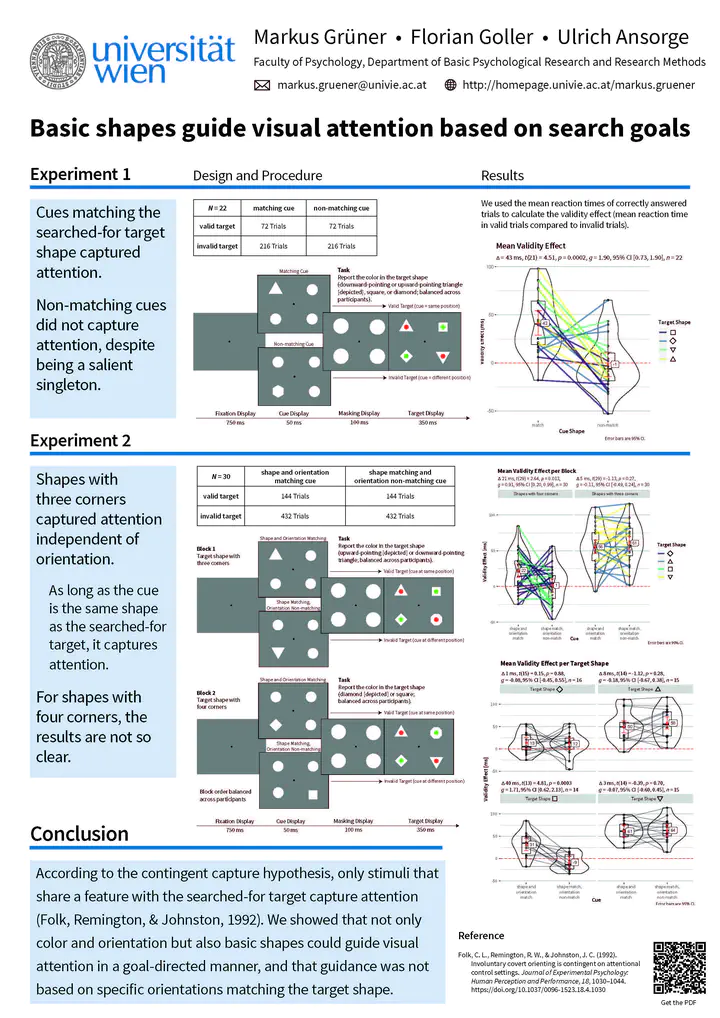
Abstract
We investigated whether basic shapes can guide visual attention in a goal-directed manner. Participants searched for one specific target shape among different basic shapes (square, diamond, triangle, and pyramid) and reported the color of a dot within the target shape. Before the target display was shown, we presented a matching or nonmatching cue among three circles. The matching cue had the same shape as the target, whereas the nonmatching cue was a hexagon, which was never part of the target display. We found faster reaction times when the matching cue appeared at the same position as the target (valid condition) compared with a different position (invalid condition), suggesting that the matching cue captured attention. However, the nonmatching did not capture attention (same reaction times in the valid and invalid ondition), despite being a salient singleton. Results are discussed in terms of top-down contingent-capture theory.